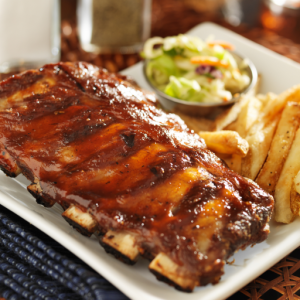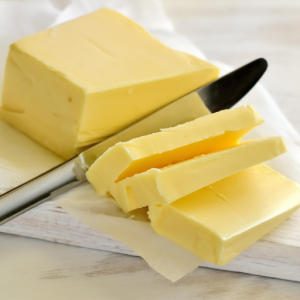Chronic Pancreatitis: When Good Meals Turn Bad

We all enjoy a good meal, but if you suffer from chronic pancreatitis, that simple pleasure can become a source of agony.
Most people don’t think about the pancreas, but it’s there nestled partially behind the stomach, quietly doing its job to digest and absorb nutrients in our food.
Chronic pancreatitis is a progressive inflammation of the pancreas that leads to structural damage and eventual loss of pancreatic function, explains Anthony Griffin, MD, an internal medicine physician with Memorial Care in Jacksonville.
- Chronic pancreatitis often develops in patients between the ages of 30 and 40 and is more common in men than women, according to the National Pancreas Foundation.
- The disease affects about 10 in every 100,000 people.
- People with pancreatitis are not able to digest their food well, particularly fat.
- Saturated and trans fats, such as those found in butter and margarine, should be consumed rarely and only in very small amounts, Instead, consider using reduced-fat, whipped or liquid spreads.
- Alcohol and smoking are highly discouraged with pancreatitis.
- Pancreatic enzyme supplements will help with absorption.
Most individuals with chronic pancreatitis experience upper abdominal pain, although some have no pain at all. The pain may spread to the back, become worse with eating or drinking and become constant and disabling. Dr. Griffin recommends low-fat food and drinking plenty of water. The National Pancreas Foundation offers a variety of recipes on its website.
 If you suffer from pancreatitis, the Academy of Nutrition and Dietetics provides the following list of foods to avoid:
If you suffer from pancreatitis, the Academy of Nutrition and Dietetics provides the following list of foods to avoid:
| FOOD GROUP | FOODS TO AVOID |
| Grains | Products made with added fat (such as biscuits, waffles and regular crackers); high-fat bakery products (such as doughnuts, biscuits, croissants, Danish pastries, pies and cookies); snacks made with partially hydrogenated oils (such as chips, cheese puffs, snack mixes, regular crackers and butter-flavored popcorn). |
| Fruits and Vegetables | Fried fruits or vegetables; fruit served with butter or cream; vegetables prepared with butter, cheese or cream sauce. |
| Meat and Beans | Higher-fat cuts of meat (ribs, T-bone steak, regular hamburger); bacon; sausage; cold cuts (such as salami and bologna, corned beef, hot dogs); organ meats (liver, brains, sweetbreads); poultry with skin; fried meat, poultry and fish; whole eggs and egg yolks. |
| Dairy | Whole milk; reduced-fat (2%) milk; whole milk yogurt; whole milk ice cream; cream; half-and-half; cream cheese; sour cream; cheese. |
| Fats and Oils | Limit fats and oils to 6 teaspoons or less per day. Butter; stick margarine; shortening; partially hydrogenated oils; tropical oils (coconut, palm and palm kernel oils). |
| Beverages | Alcohol, wine, beer, liquors. |
| Desserts | Any desserts, pies and cookies made with whole milk, eggs and added fat. |
Other Resources
Be Proactive about Screening for Colorectal Cancer
Know the Stealthy Symptoms of Stomach Cancer
Cancer Screening: Reaping Rewards of Early Intervention